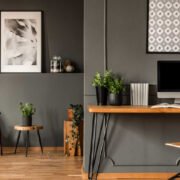In a fiercely competitive business landscape, success depends not only on the quality of products or services but also on the emotional connections they foster with consumers. At the heart of this connection lies desirability – a concept that holds significant sway over user experience (UX) and ultimately, business outcomes.
In this article, you will learn more about the essence of desirability in business, as explained by a popular UX agency!
Understanding desirability in business
Desirability in business transcends mere functionality or utility. It encompasses the intangible qualities that evoke longing, attraction, and emotional resonance in consumers. When a product or service possesses desirability, it ignites a sense of yearning, compelling individuals to engage with it on a deeper level. Whether it’s the sleek design of a smartphone or the immersive experience of a luxury hotel stay, desirability plays a pivotal role in shaping consumer preferences and behavior.
The role of desirability in UX design
In UX design, desirability emerges as a critical factor in creating compelling user experiences. While usability remains paramount, desirability adds an extra layer of allure and engagement that transcends mere functionality. It encompasses factors such as aesthetics, brand perception, and emotional resonance – elements that leave a lasting impression on users long after they’ve interacted with a product or service.
UX agencies strive to find the right balance between functionality and desirability, leveraging their expertise to craft user experiences that captivate and delight users. Through meticulous research, user testing, and iterative design processes, they can unravel the intricacies of your users’ psychology and preferences, infusing products and services with elements that spark their desire and ultimately, foster their loyalty. For more information about desirability studies in practice, you should check out the ergomania.eu website.
The elements of desirability in user experience design
What are the building blocks of desirability in user experience design? From intuitive interfaces to visually stunning designs, several key elements contribute to the allure of a product or service:
- Visual appeal
Visual aesthetics wield considerable influence over desirability. Crisp, clean designs, striking imagery, and harmonious color palettes can captivate users from the moment they lay eyes on a product or interface. By investing in visually appealing design elements, businesses can create an instant connection with their audience, setting the stage for a positive user experience.
- Emotional engagement
Emotions play a pivotal role in shaping user behavior and perception. Brands that evoke positive emotions such as joy, excitement, or nostalgia are more likely to resonate with consumers on a deeper level. Whether through compelling storytelling, empathetic messaging, or immersive multimedia experiences, businesses can forge emotional connections that increase the desirability of their products and services.
- Brand consistency
Consistency across touchpoints is essential for building a strong brand identity and fostering desirability. From your website to your social media channels, and even your physical storefronts, maintaining cohesive branding elements reinforces brand recognition and instills trust in consumers. A seamless, unified brand experience enhances desirability by projecting a sense of professionalism, reliability, and authenticity.
- Personalization
Tailoring user experiences to individual preferences enhances desirability by making users feel valued and understood by your business. Personalization techniques such as recommended products, customized content, and adaptive interfaces create a sense of exclusivity and relevance, enticing users to engage more deeply with a brand.
Leveraging desirability and UX design for the success of your business
Incorporating desirability into business strategies can yield tangible benefits, including increased customer satisfaction, loyalty, and ultimately, revenue growth. By prioritizing desirability in UX design, businesses can:
- Stand out in a crowded market. In saturated markets, desirability serves as a potent differentiator, enabling businesses to carve out a distinct identity and attract attention amidst their competitors.
- Foster brand advocacy. Satisfied and emotionally engaged users are more likely to become brand advocates, spreading positive word-of-mouth and contributing to organic growth.
- Drive customer retention. By cultivating strong emotional connections with users, businesses can acquire long-term loyalty from members of their target audience and reduce churn rates, leading to sustained profitability.












